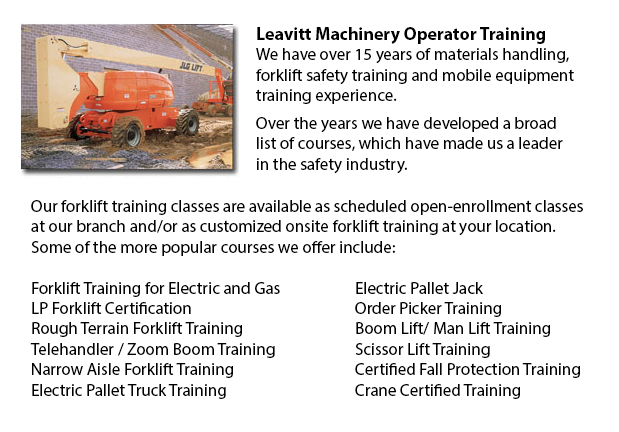
Langley Boom Lift Operator Training - The cherry picker work platform is a kind of work platform, which would typically consist of a bucket or platform at the hydraulic lifting system's end. The machine is likewise referred to as a man lift, boom lift, hydraladder or basket crane.
The platform or bucket is sometimes set onto or mounted to a truck or other motor vehicle and is occasionally called a bucket truck. Other motor vehicles that could be made use of are self-moving platform, stand-alone trailers or flat back pickup vans. The worker stands in the bucket and works from there. The person in the bucket normally includes an upper set of controls enabling manipulation of the bucket's position. The reach of the bucket could be extended on some models by telescoping to be able to adjust the lifting arm. Automatic safety controls prevent tipping. Articulated boom lifts are recommended when it is needed to clear obstacles or for working in tight spaces.
As the name implies, cherry pickers were made for picking fruit in trees at high levels. Cherry pickers are used in various other industries, such as mining, exterior painting and construction. Occasionally they are used for cleaning windows on high building. The machines are used to service telephone, cable television and electrical equipment on utility poles. At times, firefighters make use of cherry pickers, called snorkels, when ladders are insufficient. At Christmas time, civic workers could be seen inside cherry pickers hanging lights and banners.
Boom Lift Operator Safety Training
Recommended training standards for safety awareness are set by local regulations. Program consists of safe operation procedures through a combination of classroom and hands-on components.
The following topics are covered: general equipment safety considerations; current regulations and applicable issues; fall protection; features of boom lifts, other stationary work platform and scissor lifts.
The lift operator's responsibilities are covered, including the following topics: workplace inspections; function test procedures; knowing and avoiding hazards; equipment manufacturer's directions and pre-operation check procedures.
-
Operator Safety Certification | Re-Qualification Certification | In-House Instructor Certification in Langley
Lift trucks are utilized in nearly all warehouse operations and in boat yards and in industrial construction sites. The reach feature of a forklift is a vital component used in several applications like for example whenever a shelving system is being... More -
Skid Steer Loader Certification in Langley
The engine powered skid-steer loader consists of a small and rigid frame, equipped along with lift arms that could connect to numerous industrial attachments and tools to carry out several labor saving jobs. Normally, skid-steer loaders are four-whee... More -
Langley Forklift Training Classes
Langley Forklift Training Classes - Forklift are heavy pieces of industrial machines that are utilized in transporting and the handling of merchandise and materials. They are often known as Lift trucks and are found in all kinds of industries. Employ... More -
Langley Heavy Equipment Operator Certification
Langley Heavy Equipment Operator Certification - The heavy equipment operator is an individual who manipulates the controls and drives various kinds of big machinery. Heavy machines is most commonly used on construction sites in order to deliver supp... More -
Langley Crane License
Langley Crane License - Crane operators ought to be "credentialed", which means they ought to own a crane operator license or certification. Credentialing is considered a mandatory governmental prerequisite to be able to practice as a crane operator.... More -
Langley Forklift Training School
Langley Forklift Training School - Forklift Training School And What It Truly Has To Provide - Industry and federal regulators have established the criteria for forklift safety training according to their current standards and regulations. People wis... More -
Langley Boom Lift Certification
Langley Boom Lift Certification - Elevated work platforms allow maintenance operations and work to be performed at heights that can not be reached by whichever other way. Workers utilizing boom lifts and scissor lifts could learn how to safely operat... More -
Langley Manlift Safety Training
Langley Manlift Safety Training - Manlift operators need to be cognizant and aware of all the potential dangers which are connected with specific classes of scissor lifts. They have to be able to operate the scissor lift in a way that protects not on... More

Forklift Certification Langley
TOLL FREE: 1-888-254-6157
Langley, British Columbia
forkliftcertificationlangley.com
Email Us
About Us


